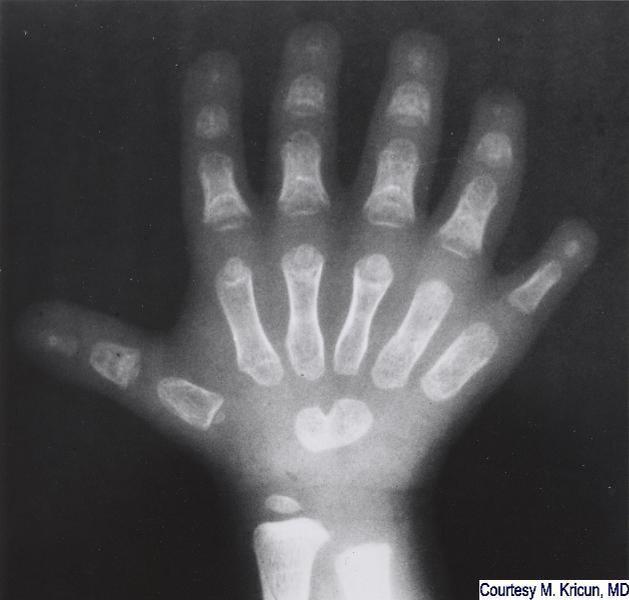|
|
Polydactyly
General Considerations
- A duplication abnormality in which there are more than five fingers or toes
- May be unilateral or bilateral
- May occur on the
- Ulnar side (most common) – also called postaxial polydactyly
- Most commonly, a rudimentary finger consisting only of a terminal phalanx
- More common in African-Americans where it is usually an isolated abnormality; in Caucasians, it is usually part of a syndrome
- In 14%, it is an autosomal dominant disorder with variable penetrance
- More frequent in males
- Radial side (less common) – also called preaxial polydactyly
- Most frequent in Indian populations
- May vary from small skin fold to duplicated digit
- Centrally (least common)
- Extra digit occurs on index, middle or ring finger, the index finger being the most common
- May be associated with syndactyly
Associations
- May occur sporadically or part of syndrome; some, but not all, include
- Ellis-van Creveld – bilateral and postaxial
- Down
- Holt-Oram
- Fanconi
- Basal cell nevus
- VATER
Treatment
- May include surgery or suture ligation

Polydactyly. There is an extra digit, fully formed, on the ulnar side of the hand in this patient with Ellis-van Creveld Syndrome.
McCarroll HR (2000). "Hand anomalies.". J Hand Surg [Am] 25 (6): 1007–37
Frantz CH, O’Rahilly R (1961). "Congenital skeletal limb deficiencies". J Bone Joint Surg Am 43: 1202–24
|
|
|